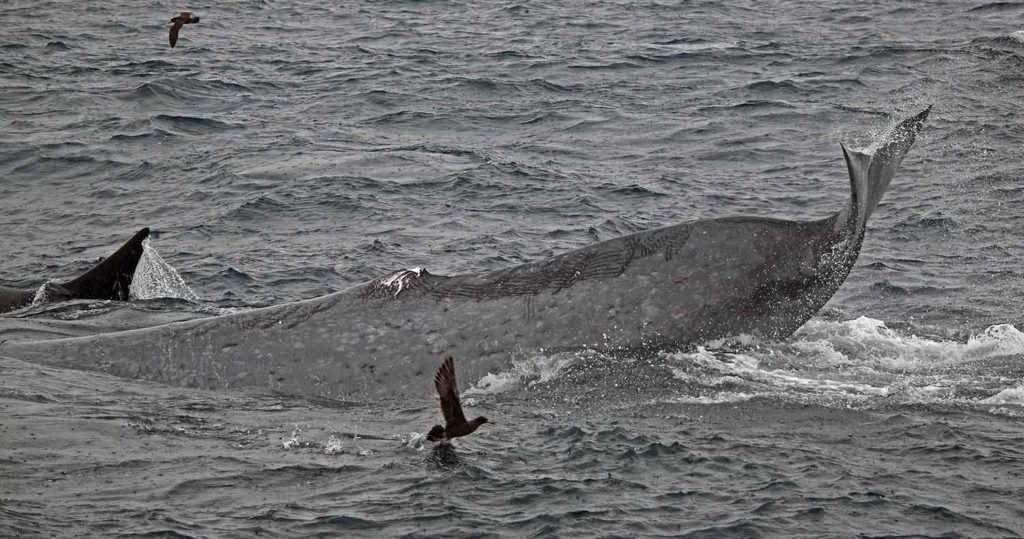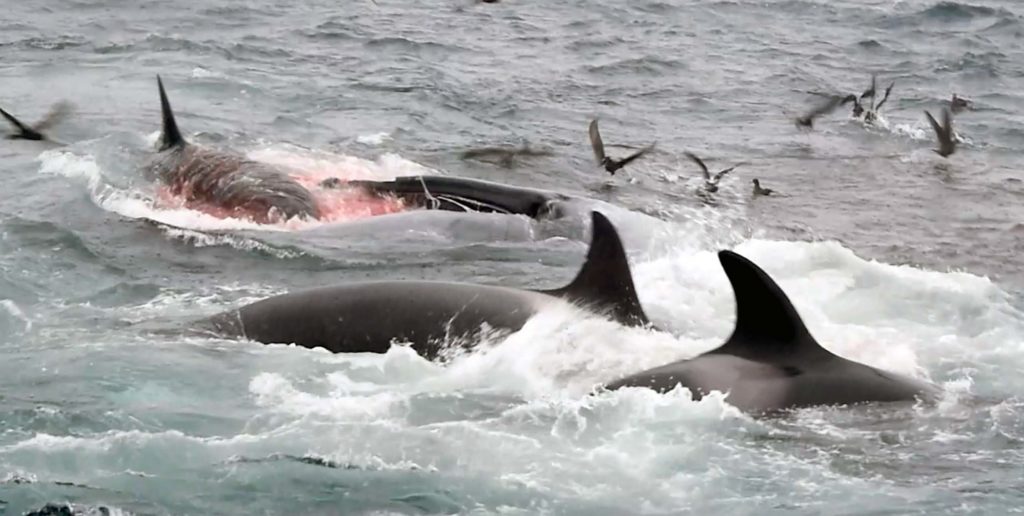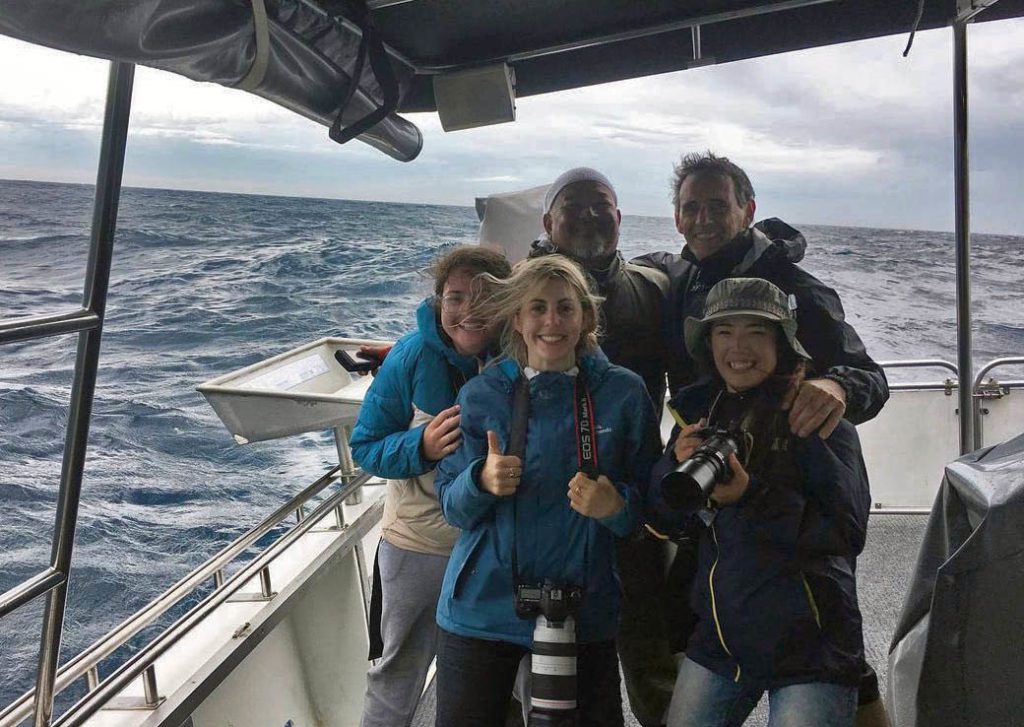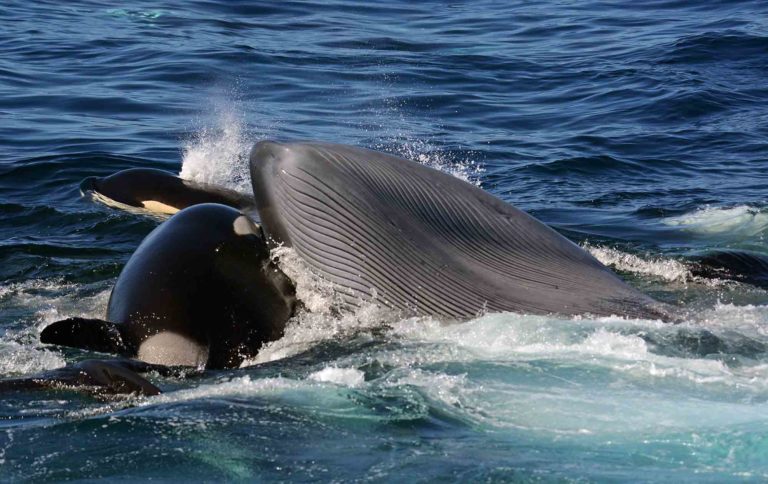The first eye-witnessed killing by orcas of one of the world’s biggest animals, an adult blue whale, has been reported in Western Australia – with two more fatal attacks carried out by killer whales on blues confirmed since.
The initial incident, in late March 2019, was observed during an annual whale and dolphin research survey carried out by the Cetacean Research Centre (CETREC WA) and Project ORCA.
Also read: Why are killer whales attacking boats? Expert Q&A
Only a fortnight later a blue whale calf was killed by orcas in the same area, including many of the same individuals, and in 2021 a similar fate befell a juvenile, the two incidents witnessed by tourism charter companies. The three killings have now been detailed in a study in the journal Marine Mammal Science.
Killer whales or orca (Orcinus orca) are apex predators known to attack whales as well as other favoured prey such as squid and fish, but they had only ever been recorded killing and feeding on whale calves or yearlings, particularly grey, humpback and minke.
They had been documented harassing blue whales (Balaenoptera musculus) before, but had not been known to go on to kill them.
In the first incident, which lasted for some six hours, a pack of about 14 female-led orcas attacked the adult blue whale at the surface of 70m-deep waters.
“We didn’t know this individual blue whale before and can’t say exactly how healthy it was, though we observed it putting up a spirited, prolonged defence against the attack, so to a point it did not appear weak or sick,” CETREC’s lead researcher John Totterdell told Divernet.
The orcas’ strategy was to exhaust and immobilise the blue whale and included biting off its dorsal fin early in the assault.
“Co-ordinated attack by several killer whales resulted in some females ramming the side of the whale while others attacked the head,” said Totterdell. “Close to the end, a female animal lunged headfirst into the blue’s mouth, presumably to feed on the tongue.
“The whale weakened more and we did not see the carcass again. After the whale carcass sank, about 50 killer whales were in the area feasting and sharing around the blue’s flesh.”
“Females are almost always in charge of attacks when generally hunting and foraging, such as on smaller prey like beaked whales and humpback calves, of which we have documented many dozen predation events,” said Totterdell.
“Family groups of killer whales are matriarchal – the big, tough-looking males are ‘looked after’ by their mothers most of their lives. And as a colleague once mentioned: though they do roam off to mate with other families, like Italian sons they always come back to mama!”
In the other two observed attacks male orcas were active as well as females, with orca calves also involved in the third attack on the juvenile. At least 16 of the same orcas participated in all three attacks.



Diving shearwaters, albatrosses and storm petrels added to the chaotic scenes, and towards the end of the later attacks groups of 100-plus long-finned pilot whales also turned up.
A recently discovered south-western Australian population of more than 140 orcas is often seen in the austral summer off the Bremer sub-basin continental shelf, where the attacks took place, and could be present year-round.
“These guys are ferocious, with a preference for squid, fish and beaked whales,” said Totterdell. “In recent years recordings of the number of beaked whales taken have increased; in this region they also predate on humpback and minke.
“It is suggested that killer whale predation has impeded gray whale population recovery in the North-west Pacific, yet in Australia, with many whale species known to be targeted by killer whales, the impact of their predation on these populations remains unknown. It is possible blue whales have long been a food source for killer whales, dating back to pre-commercial whaling times.”
Asked whether orca predation might impede blue whales’ recovery from the days of commercial whaling, study team-member Bob Pittman of Oregon State University told Divernet: “We know that just about all blue whale populations are recovering, albeit some much more slowly than others.
“We suggest in our paper that when blue and other large whales were nearly exterminated by commercial whaling during the last century, any killer whales that preyed on those populations may have died out or had to find other prey, and the skill-set needed to prey on large whales may have died out too.
“With blue whale populations starting to recover, killer whales may be rediscovering a prey source that has been missing for 50-100 years.”
“This study, combined with our recent research, highlights the need for increased understanding of killer whale population ecology, so we can better determine their impact on the marine ecosystem in Australian waters,” said Totterdell, who is also a keen scuba diver. Diving with orcas is however illegal in Australia. Video of the orca attack can be seen here.

Did orcas free humpback?
In a gentler encounter last month (10 January), a pod of orcas in Bremer Bay were recorded ostensibly releasing an adult humpback whale from a rope entangled around its tail.
The unusual interaction was caught on video by a drone belonging to tour operator Whale Watch Western Australia (WWWA). The observers expected the converging orcas to attack the vulnerable whale by grabbing its flippers and holding it down to drown it, but no such behaviour occurred.
The humpback was an unhealthy specimen, seen at a time when the species would normally be feeding south in Antarctica. One large male orca known as Blade was seen swimming beneath the whale’s tail fluke and appeared to be examining the rope before Queen, the matriarch of the pod, arrived.
Amid the commotion the observers said that “a large chunk of the green rope that was entangling this humpback floated free behind him”, but were unable to tell whether Queen had deliberately or accidentally helped to disentangle the whale.
The orcas regrouped and moved away as the humpback swam in the opposite direction, to where the WWWA observers could see its injuries and confirm that most of the line had gone.
They speculated that if the rescue had not been deliberate the killer whales might have decided that the effort of hunting would not be worthwhile because of the whale’s emaciated condition. Or they might have already eaten, or regarded humpbacks as simply out of season.
“They spent a boisterous day of socialising together and harassing sunfish instead,” WWWA reported.

